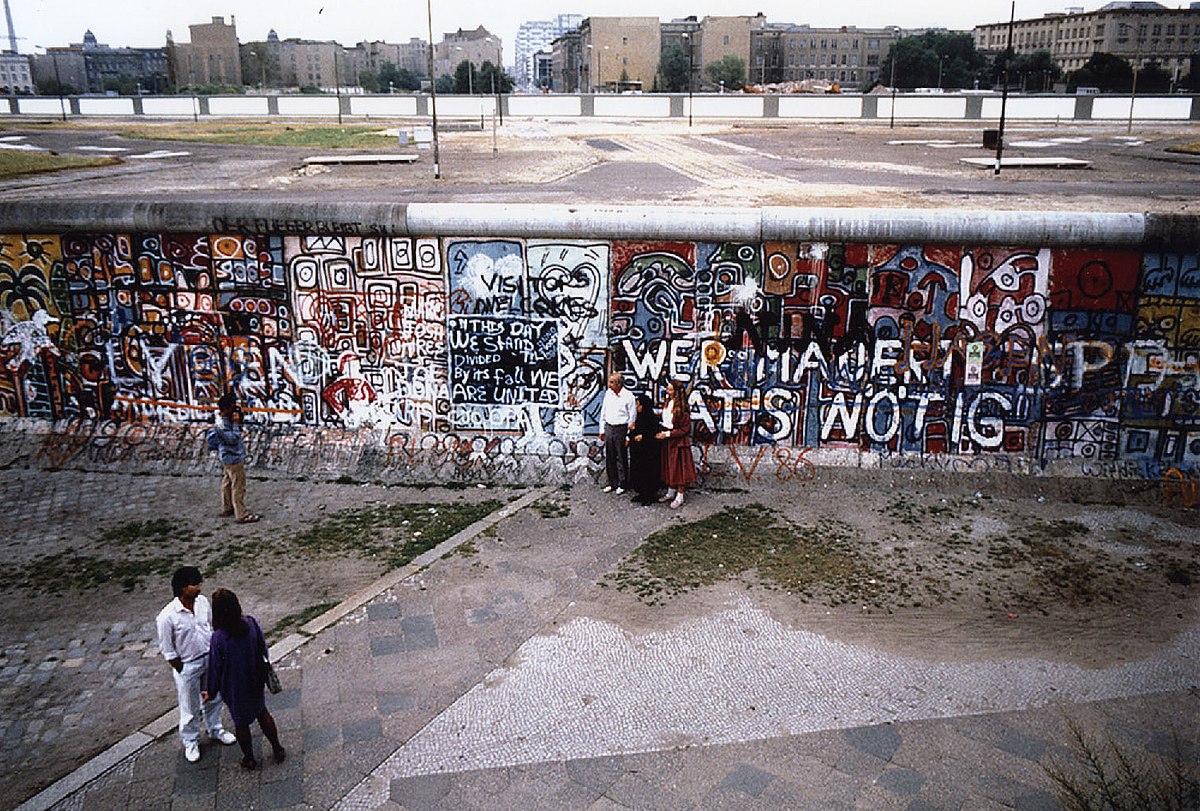The Berlin wall was constructed August 13th, 1961 in an attempt to isolate Western capitalism from Eastern Communism, dividing the city with an Iron Curtain. This sobering structure represented suppression and desolation, an eye sore for the public. It wasn’t until the late 1970’s that the wall became a symbol of economic and political unrest, in response to “suburbanization and economic globalization” (Pugh 421). The socially neglected defaced the barrier in attempt to discredit and invalidate the governmental systems of both the East and West in an effort to bring attention to civil injustice.

By Edmunddantes – Own work, CC BY-SA 3.0, https://commons.wikimedia.org/w/index.php?curid=26476566
East Side Gallery:
–After the Fall
The East Side Gallery is one of the most well-known examples of legal graffiti in Berlin—possibly the world. It was also “one of the earliest official public displays of graffiti art in postwall Berlin.” In 1990, as a celebration of freedom, international artists were invited to paint the wall; the paintings covered nearly a mile of the Eastern part of the wall. In November 1991, the Berlin Senate made the East Side Gallery an official city monument, as it still remains so today. Although it is an official monument, it isn’t very well respected among other graffiti artists, so a lot of free-expression graffiti (meaning illegal graffiti) was painted over the original works. In 2008, many of those original works were restored or repainted for the 20th anniversary of the fall of the wall in 2009. After that, security measures were put in place to protect the murals, preventing illegal graffiti to cover the legal works. Nowadays, the murals from the Gallery are in travel guides, official brochures, and on tourist items such as T-Shirts, postcards, and shopping bags (Preece 127-28).

Photo by Amber Prater